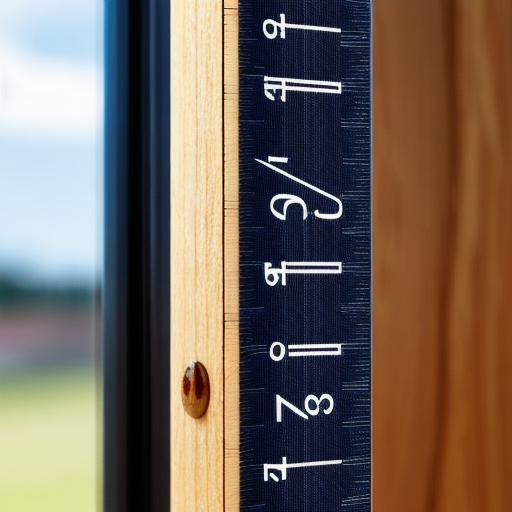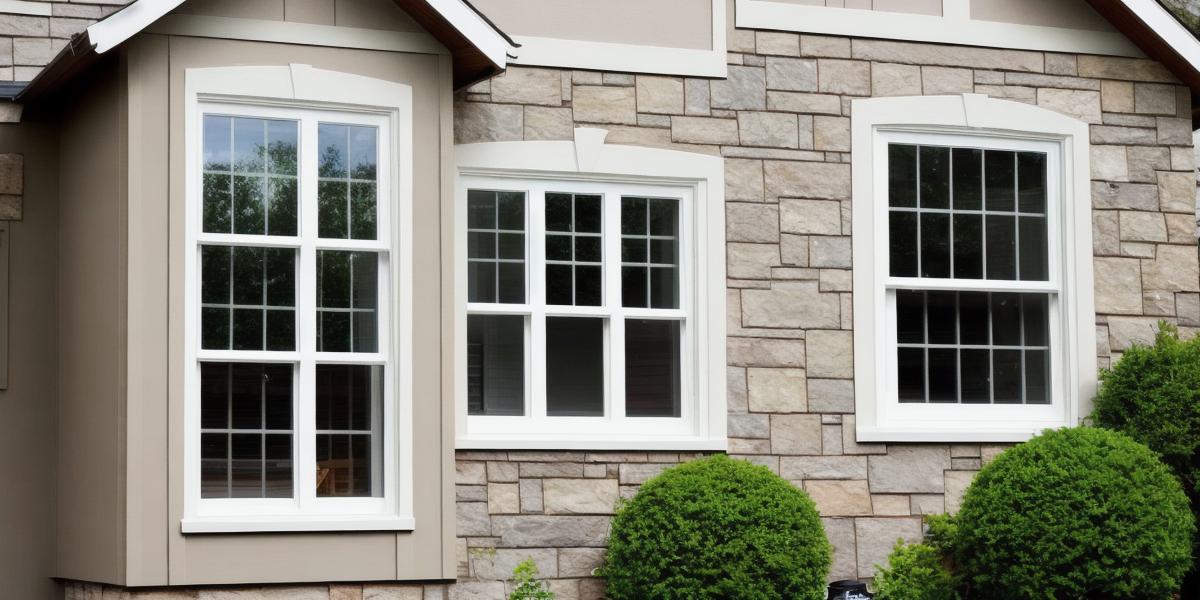Windows are an essential component of any home, providing natural light, ventilation, and insulation. However, over time, windows can become worn out and inefficient, leading to higher energy bills and a loss of curb appeal. When it’s time to replace your windows, knowing how to measure them correctly is crucial. In this article, we’ll provide you with a step-by-step guide on how to measure your windows for replacement, along with tips and tricks to ensure a successful installation.
Why Measure Your Windows for Replacement?
Measuring your windows accurately is essential when it comes to replacing them. If you provide inaccurate measurements to the window installer, they may end up ordering the wrong size of windows, resulting in wasted time and money. In addition, if you order the wrong size of windows, they may not fit properly, leading to gaps and leaks that can be costly to fix in the future.
To avoid these issues, it’s crucial to measure your windows correctly before ordering new ones. Here are some reasons why:
- Ensuring a proper fit: Measuring your windows accurately ensures that the new ones will fit properly and provide a snug seal, preventing air leaks and keeping out unwanted pests.
- Aesthetically pleasing: Replacing windows with the right size can significantly improve the appearance of your home, enhancing its curb appeal and increasing property value.
- Energy efficiency: Installing energy-efficient windows that are the right size can help you save money on your energy bills by reducing heat loss in winter and heat gain in summer.
- Cost savings: By measuring your windows accurately, you can avoid ordering the wrong size of windows, which could result in wasted time and money.
How to Measure Your Windows for Replacement
Measuring your windows for replacement may seem daunting at first, but it’s actually a straightforward process. Here are some steps to follow:
- Gather the necessary tools: To measure your windows accurately, you will need a few basic tools, including a measuring tape or ruler, a pencil, and a square or rectangle.
- Remove any obstructions: Before measuring your windows, make sure that there are no obstructions, such as curtains or blinds, blocking your view of the window frame.
- Measure the height and width: To measure the height and width of your window, start at the top corner of the frame and move the measuring tape or ruler down to the bottom corner. Make sure that you’re measuring from inside the frame to outside the frame. Take two measurements – one for the height and one for the width.
- Measure the opening: To measure the opening of your window, start at the top corner of the frame and move the measuring tape or ruler down to the bottom corner, just like you did in step 3. This time, though, you’ll be measuring from outside the frame to inside the frame. Take two measurements – one for the height and one for the width.
- Record your measurements: Once you have your height and width measurements, record them on a piece of paper or in a notebook. Make sure that you record both the height and width of the window opening as well.
- Double-check your measurements: Before ordering new windows, double-check your measurements to ensure that they’re accurate. If you have any doubts, consider getting a professional to measure your windows for you.
Tips for Measuring Windows Accurately
Here are some tips to help you measure your windows accurately:
- Use the right tools: Make sure that you’re using the right measuring tools for the job. A measuring tape or ruler with a straight edge and a pencil or square is all you need.
- Remove any obstructions: Before measuring your windows, make sure that there are no curtains or blinds blocking your view of the window frame.
- Measure from inside the frame: When measuring the height and width of your window, start at the top corner of the frame and move the measuring tape or ruler down to the bottom corner. Make sure you’re measuring from inside the frame to outside the frame.
- Measure both the window and opening: Don’t forget to measure both the height and width of the window and the opening. This will ensure that your new windows are the right size.
- Double-check your measurements: Before ordering new windows, double-check your measurements to ensure that they’re accurate. If you have any doubts, consider getting a professional to measure your windows for you.

- Take into account any existing trim or sills: When measuring your windows, take into account any existing trim or sills that may affect the overall size of the window opening.
FAQs about Measuring Windows for Replacement
Q: Can I measure my windows myself, or should I hire a professional?
A: While it’s possible to measure your windows yourself, it’s always recommended to have a professional do it. They have the experience and expertise to ensure that your measurements are accurate, reducing the risk of errors and saving you time and money in the long run.
Q: How much does it cost to replace my windows?
A: The cost of replacing your windows depends on several factors, including the size of the window, the type of glass used, the frame material, and the labor costs in your area. On average, homeowners can expect to pay anywhere from $300 to $700 per window for a basic replacement, with prices going up from there.
Q: Can I save money on my energy bills by replacing my windows?
A: Yes, replacing your old and outdated windows with energy-efficient ones can significantly reduce your energy bills. Energy-efficient windows are designed to keep in warm air during the winter and keep out hot air during the summer, reducing your heating and cooling costs.
Q: How long does it take to replace my windows?
A: The time it takes to replace your windows depends on several factors, including the size of the window, the type of glass used, and the labor costs in your area. On average, homeowners can expect the replacement process to take anywhere from one to two days per window.
Conclusion
Measuring your windows accurately is crucial when it comes to replacing them. By following our step-by-step guide, you can ensure that your new windows will fit properly and provide a snug seal, preventing air leaks and keeping out unwanted pests. With the right tools and techniques, measuring your windows for replacement doesn’t have to be difficult or time-consuming.



